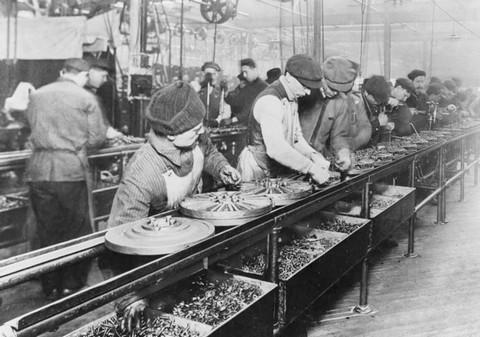Using a Conveyor Belt
Conveyor Belts are most commonly used in industry, mining, quarrying and agriculture to move and transport materials of varying weights, such as coal, ore, sand, grain, etc., usually over short distances. This technique has a wide range of uses. It can be found, for example, in the form of conveyor belts for moving people in stations and airports, moving floors for certain self-unloading vehicles, Conveyor Belts at checkouts in hypermarkets or for baggage delivery at airports, etc.
The conveyor can also be designed to transport only individual loads (cartons, totes, bags, pallets, containers, etc.) in straight or curved paths, from top to bottom.
Belt conveyor mechanisms are used as components of automated distribution and warehousing systems. Combined with automated pallet handling equipment, they enable more efficient distribution of manufactured, retail or wholesale products. These systems can quickly handle larger volumes of goods, both incoming and outgoing, with smaller storage volumes, enabling companies to achieve significant productivity gains.
The Conveyor Belt has become essential in all production lines.
Conveyor belts, also known as belt conveyors, are used in industry for the continuous transport (or mechanised movement) of goods, products or loads.
Assembly lines equipped with conveyor belts simply respond to this continuous production logic: material is transported from one workstation to another using conveyor belts.
This means that the workstations become dependent on each other, and the speed of the belts must be perfectly synchronised. Each workstation must be designed in such a way that the process can be completed within the allotted time, i.e. within the cycle time.
The evolution of the Conveyor Belt
Originally, Conveyor Belts were very simple in design and were often used to transport sacks of grain over short distances. They consisted of a simple wooden plank over which a leather, fabric or rubber belt ran. This system was ideal for transporting large objects from one point to another.
With the rise of industrialisation from the second half of the 18th century in England, Conveyor Belts became commonplace in the industrial world. Inspired largely by the army, many industries, including abattoirs and bakeries, were equipped with these time- and cost-saving transport systems. The first steam conveyor belt was probably launched in 1804 by the Royal Navy. It was used to produce long-life sea biscuits.
In the car industry, contrary to popular belief, it was not Henry Ford who introduced assembly lines, but Ransom Eli Olds, founder of the Oldsmobile brand. His concept of a continuous assembly line was patented in 1901, and his company was the first to mass-produce cars. However, the chassis were not transported from one station to another using conveyor belts, but wooden pallets. This technique is still used today.
The modernisation of manufacturing processes requires the design of new conveyor belts which, due to their constant evolution, cannot be defined statically. However, they play an active role in the development of all kinds of industries looking for ever more efficient innovations.


